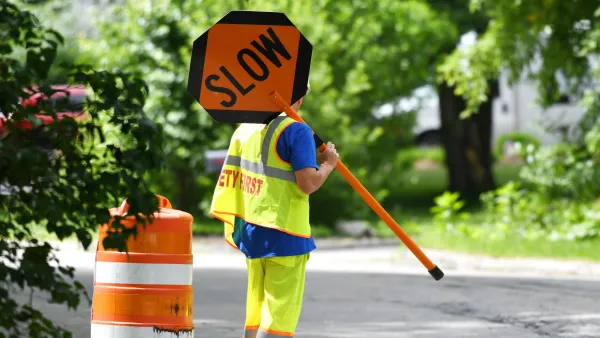Hurricane Katrina may have devastated much of New Orleans, but in its wake, literally, unexpected good work was done. Clean sediment was deposited over lead-contaminated soil, one reason why lead levels in children decreased.

"The amount of lead found in the blood of children aged 5 and younger and in soils in New Orleans were dramatically lower 10 years after Hurricane Katrina than just before the storm, according to a new scientific study," reports Mark Schleifstein, hurricane and environment reporter for The Times-Picayune.
The study serves as a reminder of pollution caused by motor vehicles, even after the pollutants have been removed from fuel.
The study by Tulane University and Colorado State University was published in Environment International on July 16. According to lead author Howard Mielke, a professor in the Department of Pharmacology, Tulane University School of Medicine, "the researchers credit three post-hurricane factors for the reductions in lead levels:"
-- Floodwaters resulting from levee failures during Hurricane Katrina covered 80 percent of the city. They left behind as much as an inch of clean sediment that formed a layer atop lead-contaminated soils, reducing exposure to children.
The largest source of lead buildup in soil resulted from motor vehicles burning leaded gasoline that was phased out by the Environmental Protection Agency between 1975 and 1996.
-- Renovations of individual flooded homes may have resulted in the removal of lead paint and the extensive cleaning of their interiors removed lead dust.
-- Restoration of yards around homes often included the addition of clean soils from outside the area, such as from the Bonnet Carre Spillway, that also covered lead-contaminated soils."
The public health crisis arising from lead in drinking water in Flint, Michigan has put the spotlight on the dangers of lead.
"No safe blood lead level in children has been identified," according to the Centers for Disease Control and Prevention, though they use "5 micrograms per deciliter (as a) reference level at which CDC recommends public health actions be initiated."
Lead paint or leaded gasoline
"The two main sources of lead in soil in New Orleans are tetraethyl lead that was used as an anti-knock additive in automotive gasoline from about 1920 until it was banned in 1996, and lead paint, which was banned in 1978, but was still found extensively in the city's older housing stock before Katrina," adds Schleifstein.
Mielke said that while it might seem to the public that lead paint -- especially its removal by sanding after Katrina -- may have been the largest contributor to lead in area soils, past research indicates the historic use of leaded gasoline delivered the most lead to people's yards, especially along busy New Orleans streets.
Mielke is an expert on the topic, heading Lead's Urban Legacy project in Tulane University.
An earlier report on the topic can be found under a Tulane University article, Katrina Flood — A Silver Lining?
Schleifstein also reports on lead levels in New Orlean's drinking water, which was not part of the study.
Hat tip to Alan Drake.
FULL STORY: Less lead in New Orleans soils, children's blood, 10 years after Katrina: study

Analysis: Cybertruck Fatality Rate Far Exceeds That of Ford Pinto
The Tesla Cybertruck was recalled seven times last year.

National Parks Layoffs Will Cause Communities to Lose Billions
Thousands of essential park workers were laid off this week, just before the busy spring break season.

Retro-silient?: America’s First “Eco-burb,” The Woodlands Turns 50
A master-planned community north of Houston offers lessons on green infrastructure and resilient design, but falls short of its founder’s lofty affordability and walkability goals.

Test News Post 1
This is a summary

Analysis: Cybertruck Fatality Rate Far Exceeds That of Ford Pinto
The Tesla Cybertruck was recalled seven times last year.

Test News Headline 46
Test for the image on the front page.
Urban Design for Planners 1: Software Tools
This six-course series explores essential urban design concepts using open source software and equips planners with the tools they need to participate fully in the urban design process.
Planning for Universal Design
Learn the tools for implementing Universal Design in planning regulations.
EMC Planning Group, Inc.
Planetizen
Planetizen
Mpact (formerly Rail~Volution)
Great Falls Development Authority, Inc.
HUDs Office of Policy Development and Research
NYU Wagner Graduate School of Public Service




























